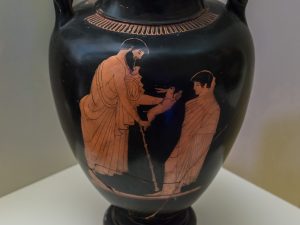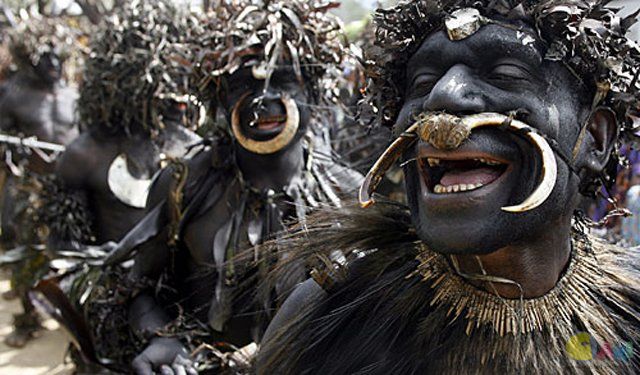Originally posted 2018-09-22 08:30:07.
Sexual transformation from boy to girl has always been hot. Enter the girly-boy: the transsexual or TS.
The oldest records we have prove the early existence of TS individuals, often priestesses or shamans. Their direct descendants are in the hijra of India, the kathoey of Thailand, the bekis and baklas of the Philippines, the travestis of the Americas, Blanchard HSTS and a host of transsexuals, trannies and shemales across the planet.
[kofi]
From the ‘Dancing Boys’ of Afghanistan to the kathoeys and baklas of Asia, from down-town Sao Paulo to Paris, in every culture, all through history, boys become girls in order to attract men. The beautiful girly-boy has always been with us, and she is not going away.
(Note: This is a light-hearted, humorous article. If you are a USican, a feminist or a Western Autogynephile, you might need a humour transplant before reading it. Just saying. Everyone in the pictures is over 18, thanks. Those capable of taking life with a pinch of salt, and wit, read on.)
Sexual Ambivalence in Art

Greek sculpture celebrated the beautiful girly-boy. This was a transgender passion, for the object of sexual attraction here was the youthful boy, the young male, who was regarded as so much more perfect than any woman, yet who played the woman in the act of sex. She was the recipient partner.
Consider Sparta, where warriors lived in barracks outside the city. Young boys beginning their life’s journey would be partnered with older men, who were able to grow beards. This was believed to improve the efficiency of the Spartan army. Men would fight and die much harder for their lovers than for mere comrades. So they had sex with girly-boys, who would one day become men.
The Spartan system was so effective that men, old enough to take wife, often found it difficult to get aroused with women, which they had to, in order to sire more soldiers.
In Ancient Greece, this was formalised into a system in which the older male was known as the ‘erastes’ and the younger as the ‘eromenos’. It was habitual for the younger male’s father to select his erastes, so it was, effectively, an arranged marriage. The relationship was sexual, until the eromenos began to grow a beard, at which point he became an erastes and took a younger lover. The bond between erastes and eromenos, however, formed during the years that they were lovers, was expected to last for life, in mutually supportive friendship.


Some Greeks, however, had qualms about this. Plato, while agreeing with the generally held view that to love a woman destroyed all of a man’s strength, deplored the sexual element of the erastes/eromenos relationship, because within it, the eromenos played the sexual role of a woman. Plato believed that this would weaken both parties. He invented an alternative, which we now call ‘Platonic Love’. Plato meant this to apply only to love between two males, because he regarded men who loved women as being fools who would have all their strength and power taken. For him, sex with a woman had one purpose, reproduction, and that was it. (Feminists might like to consider this when they call contemporary society ‘patriarchal’.)
In Rome, girly-boy slaves and prostitutes were commonplace. Here, the relationship between a man and a ‘puer delicatus‘ or ‘pretty boy’ did not have the elements of mentorship or the lifelong bonds that were implicit in the Greek practice. Romans fucked their girly-boys just for fun.
[kofi]
A puer delicatus was a boy slave, chosen as a sexual partner for his master before puberty. They were often castrated, because it would preserve their feminine qualities by stopping their testosterone and causing neoteny. Perhaps the most famous of Roman girly-boys was Sporus, who became the legal wife of the Emperor Nero and was paraded round Rome at State affairs.

Sporus’ life, alas, was short. After the Emperor Nero married her and had her castrated, he himself was killed and Sporus was taken as wife by his successor. He in turn was deposed and Sporus was married, again, to the new Emperor, but he had no use for her except, through humiliating her, to humiliate his defeated predecessors. (Very Roman.) Faced with being publicly gang raped and then devoured alive by wild animals in the Circus, poor Sporus committed suicide.
[kofi]
In Rome, for a free or noble male to publicly and willingly submit to anal penetration would invoke grave dishonour and ridicule. While this would not have stopped Roman men from penetrating, the fear of a challenge from the boy’s father, or that his own sons might be used in the same way, kept most Roman men with a taste for girly-boys to satisfying themselves with slaves.
Many Roman men kept a puer delicatus as one of a retinue of concubines, others frequented bath-houses and other places where girly-boy prostitutes known as towel boys were available for hire. These were usually castrated slaves belonging to a pimp, but could also be freed pueri delicatii who had become too old for their former master’s pleasure. Some such were retained in the domestic household but others were freed — and then had to find a way to make a living.
Self castration
Not all girly-boys were slaves or had castration forced upon them, though. Some free males self-castrated, in a tradition first recorded in the temple of Inanna at Uruk in Sumer and continued, in Rome, in the temples of Cybele, the Phrygian Great Mother. Young men called ‘galli’ ritually self-castrated and then ‘adopted women’s clothing and seemed to prefer the receptive role in anal intercourse’.
[kofi]
(Note: the word ‘galli’ means ‘Gaul’ or Celt, a race abhorred by the Romans and considered uncouth and stupid. The term might have been applied here because self-castration was the most stupid thing any male could do, to a Roman. On the other hand, it might have been a translation of the word ‘gala’ which described a transsexual priestess in Assyrian culture.)
‘The passion for transition and self-castration became so prevalent at its peak that the Emperor Domitian (81-96 CE) banned the practice’. *
These were girly-boys. They served their goddess in a number of ways, but particularly as sexual partners for men.
Japan: Wakashudō, The Way of the Young.

Possibly the last group one might imagine enjoying the pleasures of girly-boy flesh might be the Samurai, the ferocious warriors of Japan. But they had a remarkably similar system to the Greeks, called Wakashudō. In this a boy was apprenticed to a warrior, who then taught him the arts of war and also those of male honour and the warrior code.
The Samurai would teach the young boy about martial arts, warrior etiquette, and the code of honor shared amongst the Samurai. The union would often continue past adulthood, and turn into a form of friendship inspired by loyalty.
Until the boy came of age, the bond was sexual in nature. The warriors believed that sexual relations with women weakened the mind, body, and spirit, and thus turned to men instead, seeing the union as sharing each other’s battle spirits.
However, the battle spirits could only be shared for a certain amount of time, as when the boys began to grow facial hair and bulk up, or turn from boys to men, the relationship was considered inappropriate. After that, the boy would continue to serve his older partner in battle, until he could choose a younger male partner of his own, and pass down the teachings he had learned. (All That’s Interesting.)
The similarity with the Greek ideas is striking. Warrior code, lifelong bonds between men formed through sex between them when one was a boy, and the belief that relationships with women weakened men, are all present in both.
Today: the Sambians
This tradition can still be found today, amongst tribes in New Guinea collectively known as the ‘Sambians’ (Actually a tribe of the Etoro people; Sambians is a name invented by ethnographer Gilbert Herdt, designed to protect them from prurient Western interest), but also within Afghani and Pakistani traditional cultures and across the world. The practice is maintained by some of the most ferocious and feared warriors on the planet today, for example the Mujahedin.

For a man to have sex with a beautiful girly-boy, in these cultures and still today, was not considered homosexual, because homosexuality in the sense that it is meant now, at least in the Anglo-Saxon West, did not exist. There was no ancient culture that approved of sex between adult males of the same status.
In these cultures, a boy is not the same as a man. A boy becomes a man, through various means and one of these is through being the partner to a man. This is sexual yes, but it is also much more; it is a master/apprentice relationship, in which the master teaches the apprentice everything about how to be a man, including how to be a strong lover.
Becoming a man is a process of transformation. In this understanding, all children and adolescents are, effectively, girls and some become men by going through culturally-imposed training and testing. This begins with the boy being the submissive sexual partner to an adult male and slowly maturing into a man, who then himself will take a boy lover to transform into a man.
(These ideas formed the basis of Benedict Friedlaender’s beliefs and in turn inform the modern New Gay Man, with his insistence on his own masculinity.)
The Sambians, famously, believe that boys must ingest the semen of older men in order to perform this transformation and so their boys fellate older males and drink their semen. Once they begin to fully masculinise, the practice stops and the younger man then begins to donate his semen to others in the same way. It would be impossible for a Sambian male to become a man without this.

Two Boys Pretending to Be Men
The contemporary concept of homosexuality, in which two girly-boys pretend to be men, would completely baffle a Greek or a Roman as much as it would a Pashtun or a Sambian today (not to mention me). Yet in these cultures there remain boys who do not become men; who remain ‘not-men’ all their lives. They are tolerated and may be part of the company of women, but they are unable to enter the company of men; it is forever barred to them. They are the girly-boys.
[kofi]
In these cultures, all young people are girls, unless or until they become men, or mothers. The role of the erastes and all his equivalents today was to turn the eromenos from a girl into a man. But as long as the latter remained a girl, she was available sexually and (this is important) without the constraint on sex with a female, who might get pregnant. When a boy became a man, so the relationship had to change, to one of equals, between two men, neither of whom could be penetrated.
In these cultures, boys were sexual beings and, as immature males, both subject and responsive to the lust of older ones. But it was through sexual relations with older men that the boys themselves became men.
Situational Homosexuality.
Consider, for a moment, ‘prison sex’. Sexual relations between prisoners kept in same-sex institutions are well known. These are sometimes represented as symptoms of male dominance — the big, tough, mean men force weaker males to have sex with them. But this is not always true. In many cases, if not most, the submissive partners become women, sexually at least, voluntarily. They seek out the beasts and offer themselves. Why? Partly for protection, but also for something else.

Quentin Crisp explains the desire that girly-boys have for men like this:
‘(they see themselves as) young, frail, beautiful, and refined. Hence their predilection is for huge, violent, coarse brutes.’**
This behaviour has been described as ‘situational homosexuality’ but that concept depends on the notion that heterosexual relationships between men and women are somehow more ‘normal’ than those between men and girly-boys. It is likely that the latter relationships are just as ‘normal’. ‘Situational homosexuality’ therefore, would just be a normal part of male sexual expression. To put it bluntly, it would be a form of heterosexual sex.
Two cocks
This only sounds odd to an Anglo-Saxon ear, conditioned by decades of New Gay Man propaganda that says ‘any relationship with two penises in it is “gay”‘. This is essentialist and defines relationships in terms of biological structures. But there is another, much older, more widely-held and more realistic approach that says that practice is what counts. In other words, any relationship in which one partner plays the social and sexual roles of a man and the other those of a girl, is heterosexual. In other words, fucking is what men do and being fucked makes you a woman.
[kofi]
The Greeks, the Romans, the Sambians, the Pashtuns all understood that homosexuals were those boys who could not grow up to be men; those who preferred and clung to the submissive, female sexual role and modelled their gender to conform with that. These are the girly-boys.
In this understanding, a man who penetrates is just being a man, regardless of what he penetrates and, indeed, in some, as in Greece or Japan, penetrating a boy was seen as more honourable and more manly than penetrating a woman.
[kofi]
Think about the behaviour of soldiers, in the days before women were in armies. Where they had no access to women, for example in POW camps during WW2, the men dressed up as women and put on shows.
‘Military concert parties ― for the troops by the troops — featuring female impersonators was a British military tradition that went as far back as the eighteenth century, if not earlier.’ ***
and of one performer, a Dutch Eurasian (today, Indonesian), it was said
‘This fellow had dark brown eyes with long, curling eyelashes, and a smooth olive complexion. He was five feet, five inches tall and weighed about 150 pounds — the perfect size for a female impersonator — and when he was made up with a wig and what served as cosmetics, he was a dead ringer for the real thing.’***
This performer was known as ‘Sambal Sue’ and it is clear that she was a girly-boy. Small, lightly-built and pretty, she was the classic Blanchard HSTS as described by Bailey. ****
Western notions of sexuality are baseless.
 To understand all this you have to realise that contemporary Western notions of gender and sexual behaviour are somewhat particular, to say the least. In earlier cultures, and across the rest of the world today, society is grouped into ‘men’ and ‘not-men’. The latter group includes women, girls, boys as yet unable to grow a beard and homosexual males. Girly-boys are those young males who remain in this latter group and indeed emphasis it through the use of hormones and other feminising techniques, as well as behaviours and dress.
To understand all this you have to realise that contemporary Western notions of gender and sexual behaviour are somewhat particular, to say the least. In earlier cultures, and across the rest of the world today, society is grouped into ‘men’ and ‘not-men’. The latter group includes women, girls, boys as yet unable to grow a beard and homosexual males. Girly-boys are those young males who remain in this latter group and indeed emphasis it through the use of hormones and other feminising techniques, as well as behaviours and dress.
[kofi]
In this milieu a sexual relationship in which a man (of age to grow a beard) penetrates a boy (not able to) is ‘man’ penetrating a ‘not-man’ and so is the definition of heterosexual sex. It is permitted even in apparently homophobic cultures, for example contemporary Islam. This is why so many patriarchal religions have specific rules against men shaving their beards. To do so would be to reject their own masculinity and so become not-men.
Denying the male cultural role.
In other words, it’s fine for a man to have sex with someone who is a ‘not-man’. But it is not allowed for a man to become a not-man. An adult male is supposed to adopt the cultural role appointed for him — of husband and masculine father, but mainly of sexual penetrator and warrior.
[kofi]
Or why not buy a book?
* Endres, Nikolai. Galli: Ancient Roman Priests. 2005. http://www.glbtqarchive.com/ssh/galli_S.pdf
** Crsip, Quentin, The Naked Civil Servant. 1985. Flamingo.
****Bailey, Dr J M. The Man Who Would Be Queen. http://faculty.wcas.northwestern.edu/JMichael-Bailey/TMWWBQ.pdf
*****Bonnie, David. Bangkok Baby.




